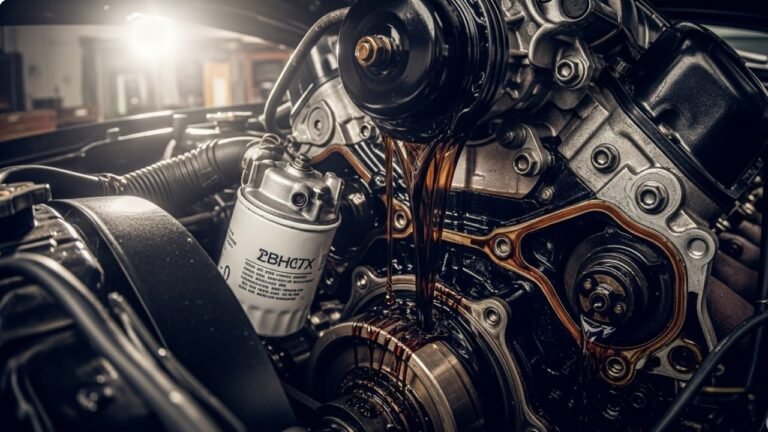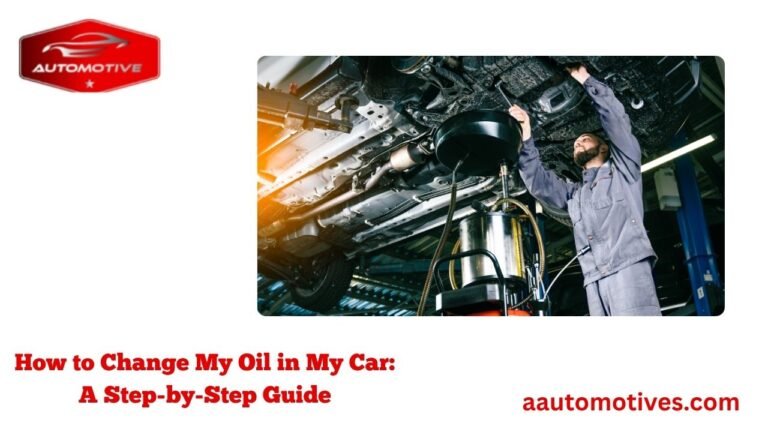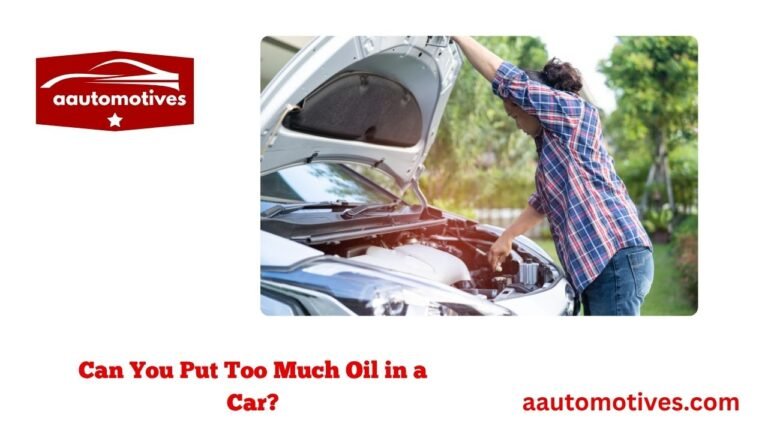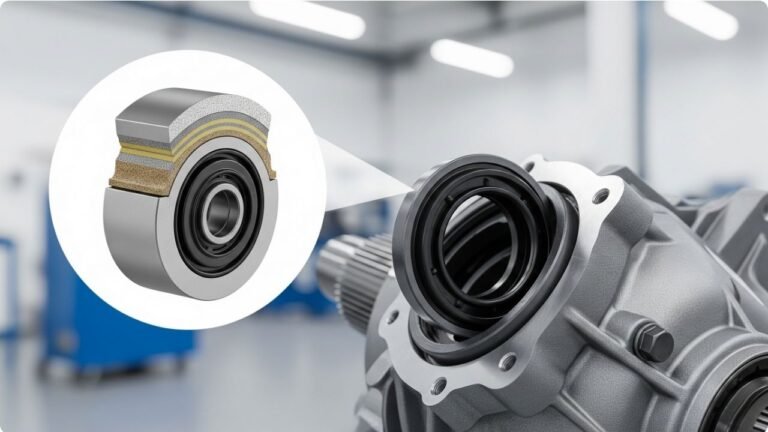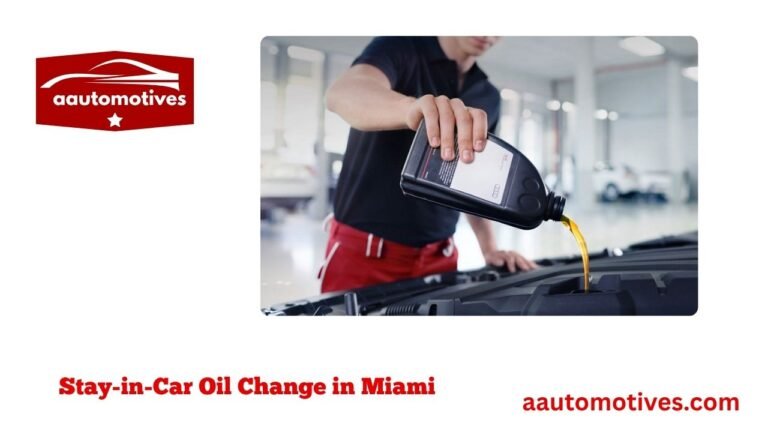Can You Drive a Car With Too Much Oil?

So, you just topped up your car’s engine oil thinking it was a simple routine. Maybe you weren’t sure about the level and added just a bit more—to be safe, right?
Now the question pops up: Can you drive a car with too much oil?
It seems harmless. After all, engine oil is a good thing, isn’t it? You’d never think too much oil could be a problem—until it is. This article breaks down the truth in a friendly, no-fluff way. We’ll talk about what happens inside your engine, how you might feel the signs on the road, and whether your car can handle the extra oil or not.
In This Article
- 1 When More Isn’t Better: The Role of Engine Oil
- 2 So, Can You Drive a Car With Too Much Oil?
- 3 What Happens If You Ignore It? (Don’t Be That Guy)
- 4 How Much Is “Too Much” Oil?
- 5 How to Know If You’ve Overfilled Your Engine Oil
- 6 Why Overfilling Oil is More Dangerous in Modern Cars
- 7 Draining Excess Oil: What You Should Do Immediately
- 8 Driving With Too Much Oil: A Real-Life Metaphor
- 9 Long-Term Effects: What If You Keep Driving With Too Much Oil?
- 10 How Mechanics View This Mistake (And Why They See It Often)
- 11 Preventing Oil Overfill: A Simple Yet Crucial Habit
- 12 Cultural Insight: In Some Places, More is Considered Better
- 13 FAQs: Quick Answers to Common Questions
- 13.1 Q1: Can you drive a short distance with too much oil?
- 13.2 Q2: Will an extra half quart of oil hurt my engine?
- 13.3 Q3: What does too much oil look like on the dipstick?
- 13.4 Q4: Can too much oil cause engine noise?
- 13.5 Q5: How do I fix overfilled engine oil myself?
- 13.6 Q6: Can excess oil damage the turbocharger?
- 13.7 Q7: What does the warning light look like if I’ve overfilled?
- 13.8 Q8: How much does it cost to fix overfilled oil damage?
- 14 Real Talk: Mistakes Happen—But Don’t Ignore Them
- 15 Final Thoughts: Your Engine Deserves Better
When More Isn’t Better: The Role of Engine Oil
Before we jump into the dangers of too much oil, let’s take a moment to talk about what engine oil really does.
It’s basically the blood of your car. Engine oil:
-
Lubricates moving parts
-
Cools internal components
-
Reduces friction
-
Prevents corrosion
-
Keeps the engine clean
But here’s the catch—it needs to stay within a specific level to work properly. Just like your body can’t handle too much blood pressure, your car can’t handle too much oil pressure.
Think of it like overfilling a balloon. A little air is good. Too much? Boom.
So, Can You Drive a Car With Too Much Oil?
Let’s not dance around it—no, you should not drive a car with too much oil.
You can, technically. The engine might start, and the wheels may roll. But every second you drive, you’re risking damage to the heart of your car—the engine.
Here’s why:
-
Excess oil increases pressure inside the engine.
-
This can foam up the oil, reducing its ability to lubricate.
-
It can cause seals and gaskets to blow out.
-
Worst of all, it can lead to hydro-locking, where pistons fail to compress due to oil entering combustion chambers.
If that sounds scary, it’s because it is.
What Happens If You Ignore It? (Don’t Be That Guy)
I’ll tell you a story. My cousin once overfilled his Toyota Corolla’s oil by about half a quart. He thought, “It’s fine, no big deal.” A few weeks later, smoke started pouring out of the exhaust. The car began to sputter. He eventually had to pay for a new head gasket—all because of too much oil.
Here’s what can happen when you drive a car with too much oil:
-
Oil leaks from seals and gaskets
-
Burning oil smell (super unpleasant)
-
Engine misfires
-
Blue smoke from the exhaust
-
Decreased fuel efficiency
-
Catastrophic engine failure
And here’s the kicker—it may not happen right away. That’s what makes it so sneaky.
How Much Is “Too Much” Oil?
A little over the mark might not wreck your engine overnight. But you’re playing with fire.
Let’s get specific. Most engines hold between 4 to 6 quarts of oil. An overfill of 1/2 quart to 1 quart may still be manageable, though it’s not recommended. But if you’ve added 2 or more quarts too much, stop the car immediately.
Table: Engine Oil Tolerance Levels
| Overfill Amount | Risk Level | Recommendation |
|---|---|---|
| Up to 0.5 quarts | Low | Monitor, but still fix soon |
| 0.5 – 1 quart | Medium | Drain excess as soon as possible |
| 1 – 2 quarts | High | Don’t drive, drain immediately |
| Over 2 quarts | Extreme | Engine damage very likely |
Can you drive a car with too much oil if it’s just a little bit over the line? Technically yes. But even that’s not a smart gamble.
How to Know If You’ve Overfilled Your Engine Oil
It’s not always obvious—especially if you did it yourself. Here’s how you can tell:
Check the dipstick:
-
Wipe it clean first.
-
Insert fully, then pull it out.
-
If the oil is well above the max line, you’ve overfilled.
Watch for these signs:
-
Sluggish acceleration
-
Engine running hotter than usual
-
Burning oil smell
-
Rough idling
If your car starts acting weird after an oil change, don’t shrug it off.
Why Overfilling Oil is More Dangerous in Modern Cars
Today’s cars are like precision instruments. They rely on sensors and tightly controlled systems. Overfilling oil messes with that balance.
Modern engines often have low oil tolerance, meaning there’s very little room for error. Too much oil can even:
-
Trigger engine warning lights
-
Damage the catalytic converter
-
Affect turbochargers (in turbocharged vehicles)
It’s like giving a smartphone a firehose instead of a charger—too much input can cause a short-circuit.
Draining Excess Oil: What You Should Do Immediately
So, you’ve realized your mistake. What now?
Here are two safe ways to remove excess oil:
Method 1: Use an Oil Extractor Pump
-
Cheap and easy
-
No need to lift the car
-
Sucks oil from the dipstick tube
Method 2: Drain from the Plug
-
Crawl under the car
-
Loosen the oil drain plug
-
Let a bit drain into a pan
-
Tighten, check, repeat if needed
If you’re unsure, go to a mechanic. Better safe than sorry—especially with your engine’s life at stake.
Driving With Too Much Oil: A Real-Life Metaphor
Think of it like eating too much food before running a marathon.
Sure, food is fuel. But too much? You’ll cramp, feel sick, and might not finish the race.
In the same way, your engine doesn’t need more oil, it needs the right amount. Going over that can slow it down—or worse—shut it down entirely.
Long-Term Effects: What If You Keep Driving With Too Much Oil?
Let’s say you ignore the warning signs and just keep driving. What’s the worst that could happen?
Honestly? A lot. Over time, driving with too much oil can:
-
Cause engine overheating
Excess oil makes it harder for moving parts to cool properly. Heat builds up, warping components like the cylinder head or pistons. -
Damage the catalytic converter
When oil seeps into the exhaust system, it clogs and eventually kills the catalytic converter. This part is expensive to replace and crucial for passing emissions. -
Lead to sludge build-up
Foam and thick oil create clumps, called sludge. Sludge chokes the oil passages and can eventually stop oil from flowing entirely. -
Reduce engine lifespan
Repeated stress from poor lubrication slowly eats away at engine health.
So, while you might be able to start your car today, you’re silently killing it if you’re still wondering, “Can you drive a car with too much oil?”
How Mechanics View This Mistake (And Why They See It Often)
You’d be surprised how many cars get towed into the shop because of overfilled oil. Mechanics see this all the time—especially from well-meaning DIYers.
One mechanic once told me, “People think they’re helping their car. But too much oil is worse than not enough in some cases.”
It’s a bit like overwatering a plant. A little water keeps it alive. But soak it too much? The roots rot.
In a similar way, engine components need balance, not excess.
Preventing Oil Overfill: A Simple Yet Crucial Habit
If you want to avoid this mess altogether, prevention is your best friend. And it’s easier than you think.
Here’s what you can do:
-
Always check the dipstick before topping off.
-
Add oil slowly—a little at a time.
-
Wait a few minutes after pouring to recheck levels.
-
Follow your car’s owner’s manual for exact oil capacity.
-
If in doubt, stop and ask for help. Even a quick YouTube video can save you hundreds in repairs.
And don’t forget, the right tools make it easier. A funnel, gloves, and clean rags can make your oil-checking experience smoother (and cleaner).
Cultural Insight: In Some Places, More is Considered Better
In many cultures, we’re taught that “more” equals “better.” More food, more protection, more care.
This mentality sometimes transfers into car maintenance. You might hear things like:
“It’s okay, just add more oil. You don’t want to run out!”
But cars aren’t people—they’re machines. They need balance, not generosity.
So next time you’re tempted to overdo it, remember: when it comes to engine oil, more is NOT better.
FAQs: Quick Answers to Common Questions
Q1: Can you drive a short distance with too much oil?
You can, but you shouldn’t. Even a short trip can cause pressure to build and damage internal seals.
Q2: Will an extra half quart of oil hurt my engine?
It might not cause immediate damage, but it still puts your engine under unnecessary stress. Drain it if you can.
Q3: What does too much oil look like on the dipstick?
The oil will appear well above the MAX line, sometimes even covering the entire stick.
Q4: Can too much oil cause engine noise?
Yes. If oil starts foaming, it fails to lubricate parts properly, causing knocking or ticking noises.
Q5: How do I fix overfilled engine oil myself?
Use an oil extractor pump through the dipstick tube or carefully drain some from the plug beneath the engine.
Q6: Can excess oil damage the turbocharger?
Absolutely. If oil gets pushed into the turbo system, it can clog air passages and damage the unit.
Q7: What does the warning light look like if I’ve overfilled?
You might see the check engine light, or oil pressure warning symbols if things are getting serious.
Q8: How much does it cost to fix overfilled oil damage?
Minor fixes may cost $100–$200, but severe engine or catalytic converter damage can run $1,000+.
Real Talk: Mistakes Happen—But Don’t Ignore Them
Look, we’ve all been there. You’re trying to take care of your car, doing the right thing. Maybe you misread the dipstick or just weren’t sure how much was too much.
That doesn’t make you a bad driver. But what matters is what you do next.
So if you’re still asking, “Can you drive a car with too much oil?”, the answer is clear:
Yes, but only for a little while—and you really, really shouldn’t.
Take a deep breath. Drain the extra. Don’t wait for a bigger problem to hit you on the road.
Final Thoughts: Your Engine Deserves Better
Your engine is the hardest-working part of your car. It deserves attention, respect, and the right amount of oil.
Driving with too much oil is like trying to protect someone by suffocating them with love. It’s well-meaning but harmful.
The next time you do an oil change or top-off, remember: your goal is balance. Not excess.
And if you ever feel unsure? Just pop the hood, pull out the dipstick, and ask your car. It’ll tell you everything you need to know.


